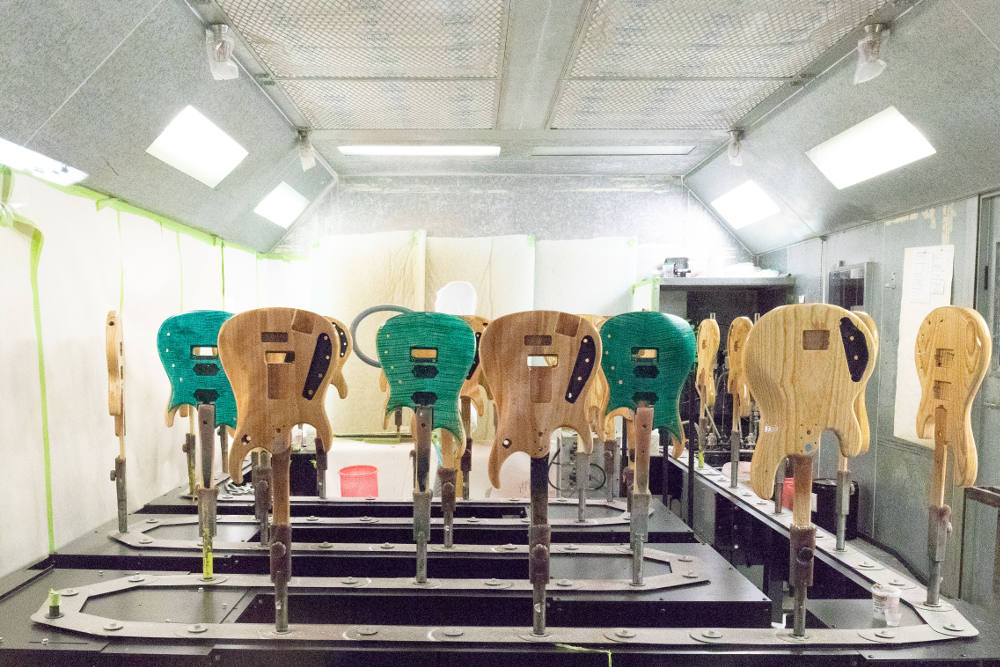With 160 employees on staff, Ernie Ball Music Man is far from the biggest guitar company around, but that need not be their concern. It was clear from the moment I walked into the factory that their focus is most certainly quality over quantity. With up to 15 people working on each instrument in their respective roles along the production process, it’s safe to say that by the time something reaches the warehouse to be shipped out, every fine detail has been checked to ensure it is up to the strict qualities of craftsmanship the brand is revered for. This was also clear when stumbling upon a few reject bins around the factory: even the slightest of imperfection won’t make it through complete production and is discarded without hesitation.

The building process begins with a number of CNC machines, including Big Bird, the big yellow robot that takes the raw wood and carves the body blanks in the blink of an eye. From there, the bodies are sanded to perfection, painted, buffed and dried to ensure they are set and stable. The necks are carved out from blanks then given the personal touch and sculpted by one of the craftsmen in the workshop. They are then sanded down and the frets are applied by hand. Believe me when I say that this entire process is incredibly meticulous and every employee ensures that their respective part is done perfectly.

Once the bodies and necks are all finished and lacquered, the really nerdy stuff begins. Music Man engineer and plate their own bridges. These bridges are designed for maximum comfort and durability. They also design and produce their own hand wound and custom voiced pickups. These pickups can be found in the StingRay, Cutlass, Valentine and St Vincent models. With the electronics all wired and the hardware installed, the final stage of production is the rigorous testing and setup each instrument receives. Given the amount of high quality materials used in the construction, it’s of the utmost of importance that the instruments play and sound like a dream. I am fortunate enough to own a few Music Man guitars myself, and was completely blown away that they were so perfectly setup straight out of the box after travelling from the other side of the world.

Seeing the instruments come to life was without a doubt amazing, but the coolest part of visiting the factory was the environment. Every staff member I spoke to on the factory floor was so excited to be working on the instruments and proud to work for the company. The design and marketing team were filled with passion and eager to talk about ideas for the future.

It was plain to see that Ernie Ball Music Man started as a family business and that even though they have grown in size, those family values are still very much in place. It’s clear that Music Man has no interest in resting on their laurels or getting complacent, which is plain to see when looking at the guitar lineup. The Valentine and St Vincent models show they’re trying new things and focusing on the needs of modern players and innovators. The return of classic Music Man models like the StingRay and Cutlass show the vast legacy the company has built, but with a practical and modern approach. The continuing development of the John Petrucci guitar models and the StingRay bass show that even though they’ve nailed them time and time again, they’re still looking for ways to take things to the next level.

It’s simple: Ernie Ball Music Man aren’t concerned with being the biggest guitar company in the world. They’re far more concerned with the needs of the modern musician and ensuring that their pristine legacy of incredibly built instruments continues to prosper for many years to come.
Images by p1xels
Ernie Ball Music Man are distributed by CMC Music in Australia.

